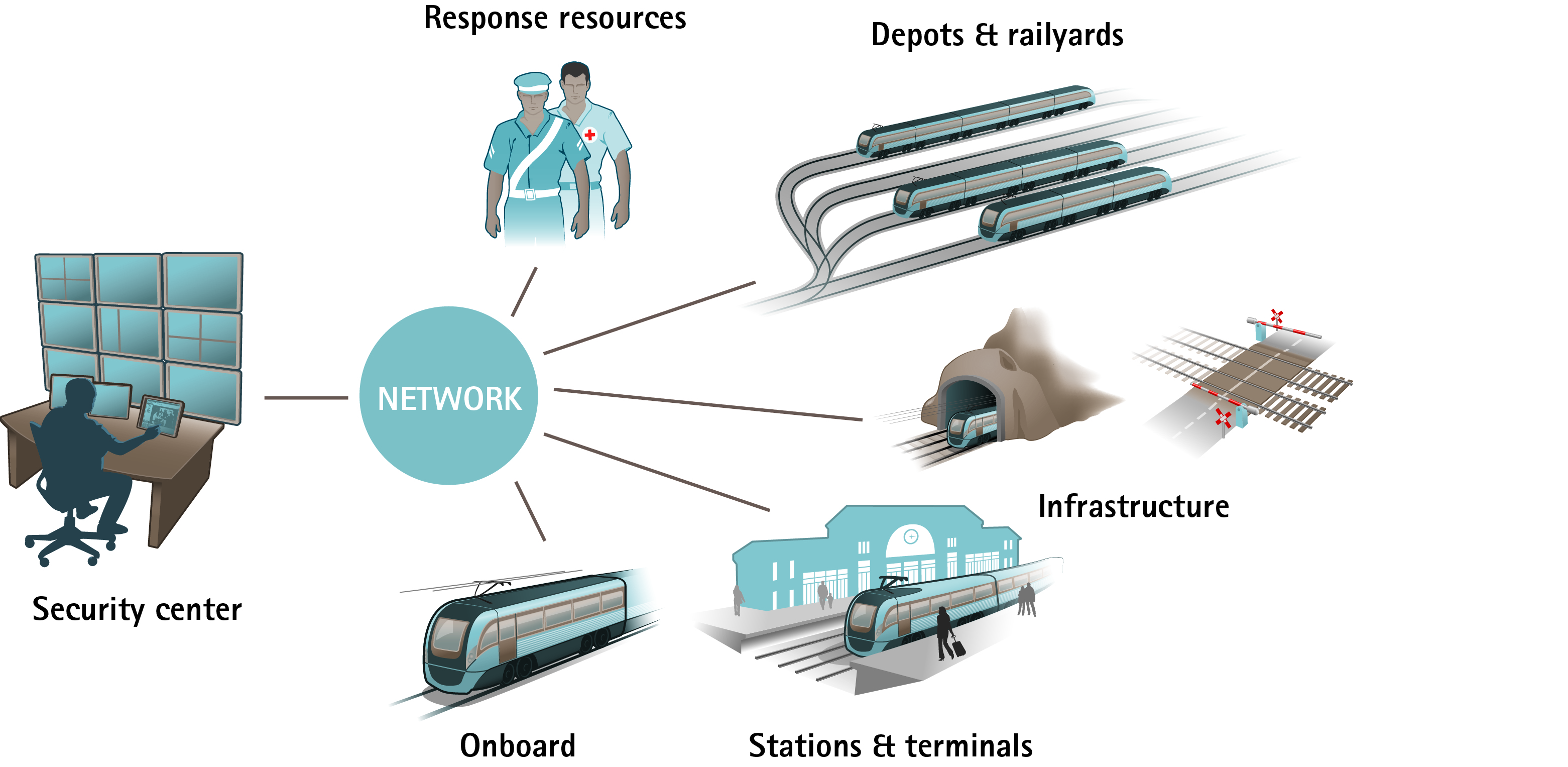A revolution is going on within the security industry – the shift from analog to digital technology. It brings new, valuable possibilities to increase actual and perceived security within public transportation systems. Already today, several station owners and transit authorities benefit from high-resolution surveillance video, automatic security alerts and centralized security systems.
One of the driving forces of the revolution is the Swedish company Axis Communications. In 1996, Axis invented the digital surveillance camera, which more often is referred to as a network camera or an IP camera. Today, Axis is fully focused on network video solutions and has more than 1100 employees. One of them is Patrik Anderson who is responsible for the company's offering for the transportation industry.
“Decades ago, the transportation sector was one of the early adopters of CCTV surveillance as security plays a central role in making public transportation the preferred choice for commuters,” says Patrik Anderson, director business development transportation, Axis Communications. “A key concern of the transit authorities is to keep their systems running with as few interruptions as possible. To achieve this, they need to know what is going on at all times – whether at stations, on board individual trains or along the transit infrastructure. And this is where network video makes a big difference.”
From forensic to real-time security
Stations and transit systems are exposed to a number of security incidents every day, ranging from vandalism and graffiti to robbery and violence. With a traditional, analog surveillance solution, video from the security cameras is mainly used forensically to investigate incidents after they have occurred. In a network-based solution the video plays a much more crucial role, offering new possibilities to efficiently monitor and respond to incidents in real-time.
“One of the overall advantages of network video is the possibility to access and share live video from the security cameras over a computer network, also wirelessly. This enables a transit authority to efficiently monitor all stations, vehicles and infrastructure from one or a few security centers,” explains Anderson. “Even if several incidents happen at the same time, a network video solution provides the real-time video images needed to get a complete view of the situation.”
Efficient incident response
To fully understand the value of access to live surveillance video, one has to consider what happens in a security center when an incident occurs. “Each incident, minor or major, has to be evaluated and followed by an active decision on what action to take – if any at all,” says Anderson. “For many of the incidents, someone also has to decide on appropriate response resources. Taking such decisions based on an emergency call from a passenger in shock or a stressed security guard is often very difficult.”
Authorities that implement network-based video surveillance systems benefit from:
-More efficient evaluation and prioritization of incidents
-Quicker and more accurate decisions on appropriate response resources
-Fewer unnecessary delays and traffic interruptions
“Networked video can also be shared with the response resources via portable computers, PDAs or mobile phones,” says Anderson. “This allows them to get a good understanding of what to expect when they arrive at the scene and prepare their response accordingly.”
HDTV video quality
Another significant improvement that comes with network video is the high image quality. “In our homes we have become used to the sharp and crisp images from high-definition television (HDTV). The very same image quality is now available in many network cameras,” says Anderson.
An HDTV camera can be used in one of two ways; it can enable viewers to see greater details in a higher resolution image, or it can be used to cover a much larger part of a scene than an analog camera. “Video from HDTV network cameras is stored in megapixel resolution. This can be a great help in investigations by facilitating positive identification and providing detailed information of the persons and objects involved,” says Anderson. “When used for overview of larger areas, HDTV cameras are a cost-efficient option as one camera covers a larger area than four analog cameras.”

Intelligent video applications
The last few years, there have been many discussions about intelligent video capabilities that enable a security camera to automatically alert when something suspicious is going on. Anderson is a little careful when discussing this topic. “It is easy to set the expectations too high, making the market believe that capabilities that are a few years away are available today. However, there are several reliable intelligent applications available – and in use – that bring great value to the security staff. Examples of such applications include motion detection, license plate recognition and tampering alarms,” he says.
A camera with a built-in tampering alarm automatically alerts the operator if the camera is covered, redirected or manipulated. Thanks to this capability, a security center can easily ensure that its cameras are up and running as intended. With motion detection, a camera can automatically detect and alert for activity in areas where there is not supposed to be any activity. This makes it easier to detect, for example, graffiti artists at depots, tunnel trespassers or suspect activity along the rail infrastructure.
Successful implementations
Madrid, Moscow, Oslo, Prague, Stockholm and Sydney are some of the cities where Axis network video solutions have been implemented in the transit systems. As the experiences are shared at security and transportation conferences, there is a rapidly growing interest among authorities and operators to learn more about the new possibilities. “More than 50,000 of our cameras have been successfully installed in buses, trains, stations, terminals and depots in different parts of the world,” says Anderson. “Our product portfolio also includes thermal network cameras and cameras with Lightfinder technology, making it possible to detect activity in complete darkness and see colors also in very low-light conditions. Looking at the response from the transportation industry so far, I believe that the network video revolution has only started,” concludes Anderson.